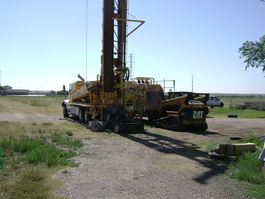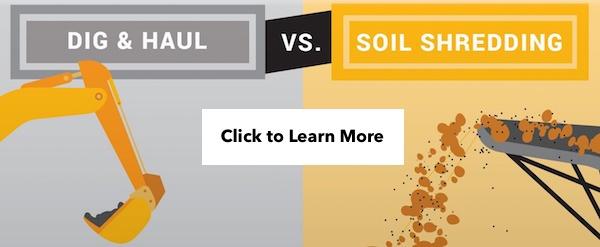Environmental drilling projects are conducted to investigate contaminants of concern in soil and groundwater; however, the environmental contaminants themselves can become a source of equipment failure and can result in a project having to start over again. Clearly, if equipment is not decontaminated properly between drilling holes, the project as a whole will suffer tremendously.
Why must equipment be decontaminated?
When equipment is contaminated with residual soil or water that is left behind from a prior drilling site, sample results become useless because of cross-contamination. In essence, the entire drilling mobilization event is a failure. From a business perspective, there is no excuse for not "measuring twice and cutting once,” or in this case, cleaning once and sampling once. To obtain laboratory sampling results that are of a high-quality with regards to accuracy and precision, the drilling equipment that is used in the field must be correctly decontaminated between drilling sites.
How should you plan for decontamination?
The U.S. Environmental Protection Agency defines the decontamination of drilling equipment as the process of cleaning dirty sampling equipment to the degree to which it can be re-used in the field. This is a simple definition right? Simply clean the equipment so it can be re-used. Well, the ramifications are significant if best management practices and standards are not followed. One decontamination standard can be found in the document: “EPA’s Field Equipment Cleaning and Decontamination.”
This guide provides broad and detailed procedures and methodologies for decontaminating sampling equipment while conducting a field investigation. You should know that there are a variety of different types of cleaning methods, from detergents to steam, and each is dependent upon the type of drilling equipment used, the sampling media being drilled through and the contaminants of concern located in each drilling area. A decontamination plan should be designed prior to initiating any drilling at a site.
What happens if you don't decontaminate between holes?
Some direct results of improper decontamination of equipment between drilling holes include:
- Unreliable laboratory sample results.
- Re-mobilization of equipment, new supplies, re-assigning labor and laboratory analysis.
- Client trust being compromised because of poor technical work practices.
- Delays in completing the environmental drilling project as a whole.
- Potential for employee health and safety exposure concerns from handling contaminated equipment.
During the final analysis of an environmental drilling project, if sample results are reviewed and found to have been influenced by cross-contamination, the repercussions can be endless. You must decontaminate equipment between sampling sites because an entire project could be jeopardized from not performing this simple action. The key is planning.
Texas Environmental Drilling Experts
Talon/LPE is a Texas environmental drilling company with several years of experience. At Talon/LPe, safety is the top priority. Trained by in-house safety and health employees, our drillers perform all projects with the utmost safety and environmental awareness in mind. Contact our Texas environmental drilling company today for your next project.


